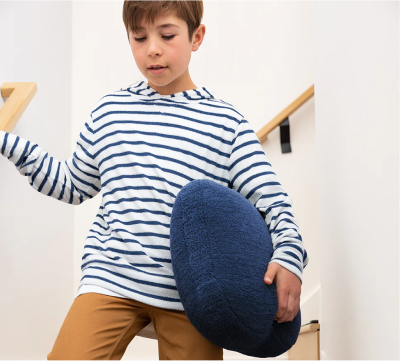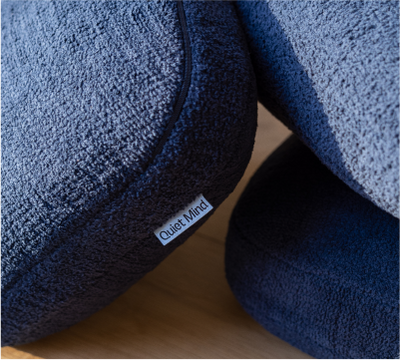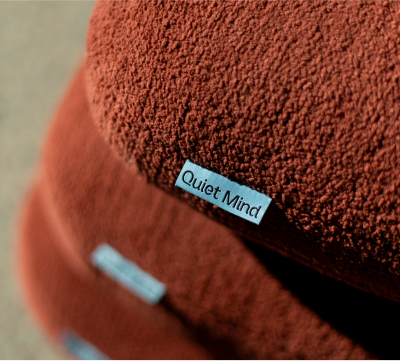You may not see it, but for someone with attention deficit hyperactivity disorder (ADHD), the world often feels too fast, too loud, or just slightly out of sync. Tasks that seem simple—starting an email, remembering a meeting, staying seated—can feel like climbing uphill with a backpack full of bees.
If you’re close to someone navigating this daily storm, you’ve probably felt it too: the unpredictability, the frustration, the deep desire to help without overstepping.
Supporting someone with ADHD isn’t about fixing them. It’s about noticing what they need, even when they can’t explain it—and showing up with patience, structure, and heart. This guide isn’t a checklist of quick fixes. It’s a gentle map for walking alongside someone with ADHD, with insight, clarity, and compassion as your compass.
Understanding ADHD: What Makes Management Challenging
Common Symptoms of ADHD in Adults and Children
Attention deficit hyperactivity disorder isn’t always visible. While some children may struggle with hyperactivity or impulse control, many adults with ADHD deal with subtler—but equally disruptive—patterns, such as:
- Difficulty starting or finishing tasks (often mistaken as procrastination)
- Trouble with time management, often underestimating how long things take
- Forgetfulness or “zoning out” during conversations
- Emotional reactivity and mood shifts
- Unreliable memory for even important reminders or plans
No two people show ADHD in the same way. For some, it’s the racing mind that never stops. For others, it’s the constant sense of falling behind despite best efforts.
How ADHD Affects Daily Functioning and Relationships
When someone has an attention deficit, it often interferes with everyday tasks and relationships. A missed deadline or emotional outburst might be misread as irresponsibility or rudeness. In reality, people with ADHD are often working twice as hard to meet expectations while fighting internal chaos.
- Working memory: Forgetting even recent conversations or to-dos
- Time blindness: Underestimating or losing track of time
- Task initiation: Feeling frozen when faced with complex or unclear steps
- Regulation: Struggling to pause and process feelings in the moment
Relationships—at home, school, or work—can suffer when these symptoms are misinterpreted. Supportive management of ADHD starts with understanding the “why” behind the behaviors.
The Importance of Individualized ADHD Management Plans
Why One-Size-Fits-All Approaches Don’t Work
ADHD isn’t just about attention—it’s a spectrum of executive functioning differences. This means that strategies that work for one person may not help another at all. For example:
|
Strategy |
Works Well For |
May Not Help If... |
|
Visual task lists |
Visual learners |
Person finds visuals overwhelming |
|
Time blocking |
People who like structure |
Time feels abstract or constraining |
|
Body-doubling |
Socially motivated people |
Person prefers solitude when focusing |
Tailoring support avoids frustration—for both the person with ADHD and those around them.
Assessing the Needs of the Individual
Instead of assuming what might help, try collaborative exploration:
- Ask: “What makes this feel hard?” rather than “Why can’t you do this?”
- Observe patterns: Do tasks get easier with music? Is focus better after movement?
- Offer choice: Let them try tools and give feedback—what sticks, what doesn’t?
Empowerment means helping the individual find their own rhythm, rather than imposing routines that feel unnatural.
Best Practices for Managing Someone with ADHD at Home
Creating Structure and Predictable Routines
People with ADHD often thrive in environments that feel stable and predictable—but not rigid. A simple, repeatable routine reduces decision fatigue and lowers the anxiety that comes with not knowing what’s next.
To help manage ADHD at home:
- Use visible, shared calendars with color-coded events
- Anchor activities to consistent times (e.g., "after breakfast = focus time")
- Allow margin between tasks—time management is often a struggle
- Keep daily-use items in visible, consistent places (keys, meds, notes)
Creating this gentle scaffolding can make it easier for someone with ADHD to focus, start tasks, and feel safe in their surroundings.
Communication Techniques That Reduce Frustration
Miscommunication can be one of the biggest stressors in relationships involving ADHD. Emotional outbursts, forgetfulness, or quick reactions are often ADHD symptoms, not personal attacks.
Ways to reduce tension and increase understanding:
- Use simple, direct language—avoid layered or vague instructions
- Pair verbal cues with visual reminders (post-its, checklists, alarms)
- Break down instructions into 1–2 steps at a time
- Ask for feedback: “Does this feel doable for you?”
Small shifts in communication can reduce conflict and create more cooperative, connected interactions—at home or in the work environment.
Encouraging Independence and Responsibility
Support doesn’t mean doing everything for someone. The goal is to build capacity—especially when helping children grow into adults with ADHD, or when you manage employees who need structure but not micromanagement.
How to support without smothering:
- Let them choose how to complete a task, not just what to do.
- Set up systems together (e.g., meal planning boards, reminder apps.)
- Accept that progress may come in waves—hyperfocus one day, procrastination the next.
Success looks different for someone with ADHD. Encouraging ownership over their own rhythms fosters confidence and long-term resilience.
Supporting an Employee or Coworker with ADHD
Reasonable Accommodations in the Workplace
Creating a supportive work environment for an employee with ADHD doesn’t require overhauling the entire office—it starts with understanding how ADHD impacts productivity, focus, and task initiation. Small adjustments can significantly improve engagement and help manage employees more effectively.
Supportive accommodations may include:
- Flexible deadlines when possible, with scheduled reminders
- Visual task lists or whiteboards for clarity and transparency
- Noise-reducing options in shared spaces (headphones, quiet zones)
- Time-blocking tools or apps that encourage pacing and breaks
Rather than focusing on deficits, accommodations show trust in the person’s potential—offering them space to work with their brain, not against it.
Fostering Focus and Minimizing Distractions
ADHD at work often shows up in unexpected ways: impulsive multitasking, missed deadlines, or zoning out during meetings. This isn’t a character flaw—it’s how individuals with ADHD experience time and attention.
Ways to create a more ADHD-friendly work environment:
- Reduce ambient distractions (e.g., visual clutter, open-plan noise)
- Allow task pacing with movement breaks or schedule flexibility
- Help structure long-term projects with check-in points
- Avoid last-minute requests when possible—ADHD brains often need time to “warm up”
Supportive systems not only benefit people with ADHD—they often help the entire team work more intentionally.
15 Gentle, Effective Ways to Support Someone with ADHD
Support doesn’t need to be overwhelming or clinical—it can start with small, intentional choices that show you’re truly present. These strategies offer practical help while also respecting the other person’s autonomy and experience:
-
Schedule regular check-ins
Short, predictable conversations help maintain momentum and reduce anxiety about “falling behind.” -
Break large projects into small, doable steps
Complexity often leads to paralysis. Help them simplify the process so the path feels clearer. -
Clarify expectations using visual tools
Use whiteboards, sticky notes, or mind maps to turn abstract goals into something tangible and visible. -
Offer flexibility in how tasks are approached
Some people focus best sitting on the floor or pacing the room. Let them choose their own rhythm. -
Collaborate on setting realistic deadlines
Estimate time together based on past experiences—not just wishful thinking. -
Encourage movement and sensory breaks
A short walk, stretch, or even standing up can reset the nervous system and boost focus. -
Use color coding and visual systems
Highlight priorities with color tabs, calendars, or designated zones to reduce decision fatigue. -
Let them pick their own support tools
Whether it's a paper planner or a productivity app, agency matters. What works is what works for them. -
Offer accountability without pressure
A buddy system or regular progress check-in can feel supportive—not surveillance—when done kindly. -
Suggest time-blocking with visual cues or alarms
External reminders reduce reliance on memory and make transitions easier. -
Celebrate wins with specific, meaningful feedback
“You really stayed with that task today” goes much further than “good job.” -
Avoid micromanaging—focus on outcomes
Trust the process. Let them explore how they work best, even if it looks different from your way. -
Create sensory-friendly environments
Consider soft lighting, quiet corners, noise reduction, or soothing textures—small changes that help calm the nervous system. -
Allow space for verbal processing
Some people need to talk things through to make sense of them. Listen without needing to “fix.” -
Suggest ADHD coaching or professional support when needed
Coaching can help build executive function, confidence, and momentum—especially when it feels like you're both stuck.
Behavioral Strategies and ADHD Coaching Methods
Positive Reinforcement and Constructive Feedback
Many people with ADHD grew up hearing what they were doing wrong. Over time, this can lead to shame, self-doubt, and resistance.
- Try shifting the focus:Celebrate small improvements: starting on time, completing one task, using a new tool
- Offer specific praise: “You really stayed focused during that meeting—great job.”
- Avoid vague criticism—be clear and kind about what needs adjusting
When feedback feels safe and constructive, it becomes a path to growth.
Role of ADHD Coaches and Counselors
Sometimes, external support creates breakthroughs that friends or family can’t offer.
ADHD coaches and therapists can help by:
- Teaching executive functioning skills (time management, planning)
- Helping develop coping strategies for emotional regulation
- Offering accountability without judgment
- Addressing self-esteem, shame, or past school/work trauma
Think of coaching as a partnered process—not a correction, but a collaboration.
When to Consider Medical and Therapeutic Interventions
Medication Options for ADHD
While not for everyone, medication can help some individuals better manage focus, impulsivity, and emotional regulation.
Common medication types:
- Stimulants: Like methylphenidate (Ritalin) or amphetamines (Adderall)
- Non-stimulants: Like atomoxetine (Strattera) or guanfacine
What to keep in mind:
- Effects vary—medication often requires careful trial and adjustment
- It’s not a “magic fix”—supportive strategies are still needed
- Always work with a qualified psychiatrist or prescriber
Medication can be one piece of a comprehensive management plan.
Cognitive Behavioral Therapy and Executive Function Support
CBT is especially helpful for adults and teens managing ADHD. It offers:
- Practical strategies to reframe negative thinking
- Support for habit-building and structure creation
- Tools to manage overwhelm, perfectionism, and avoidance
Therapy can offer relief that goes beyond symptom management—it fosters resilience and emotional understanding.
How Family, Friends, and Caregivers Can Help
Building Emotional Support Systems
Being the support person for someone with ADHD isn’t always easy. But you don’t have to fix everything—you just have to show up.
Ways to create emotional safety:
- Validate their feelings: “That sounds really frustrating.”
- Use gentle reminders instead of criticism.
- Offer co-regulation—take deep breaths together, go for a walk, pause before reacting.
Support doesn’t mean doing it all. It means walking beside them.
Avoiding Common Mistakes When Helping Someone with ADHD
It's easy to unintentionally fall into habits that worsen tension or shame. Here’s what to watch for:
|
Mistake |
Why It Backfires |
A Better Alternative |
|
Micromanaging |
Undermines confidence |
Offer structure, not control |
|
Labeling behaviors (“lazy,” “dramatic”) |
Fuels shame |
Name the challenge, not the person |
|
Expecting change overnight |
ADHD management is ongoing |
Celebrate progress, not perfection |
Your presence and patience are often more powerful than advice.
Final Thoughts: The Best Way to Manage ADHD Is With Compassion and Consistency
The most effective way to support someone with ADHD isn’t about correction—it’s about connection. It’s not your job to change who they are, but to help create conditions where they can thrive as themselves. That means offering structure without rigidity, patience without passivity, and empathy without overreach.
Managing attention deficit hyperactivity disorder—whether at home, in relationships, or in the workplace—isn’t about fixing symptoms. It’s about working with the way someone’s mind moves. When we meet individuals with ADHD where they are, with steady compassion and clear expectations, we stop trying to mold them—and start helping them grow.
About Quiet Mind
At Quiet Mind, we believe in the power of simple, natural solutions to ease the mind and body. Our signature weighted pillows are designed to provide comforting pressure, helping to alleviate stress, anxiety, and restlessness.
Whether you're seeking a moment of calm during a hectic day or a more restful night's sleep, Quiet Mind offers tools to support your journey toward tranquility. Discover the soothing embrace of our weighted pillows and find your path to a quieter mind.
Frequently Asked Questions (FAQs)
What is the most effective ADHD management strategy?
A combination of structured support, self-awareness, and consistent routines tailored to the individual. There’s no single approach that works for everyone.
How do I support a loved one who doesn’t know they have ADHD?
Focus on compassion over correction. Share resources, validate their experiences, and suggest professional evaluation if they’re open to it.
Is it better to treat ADHD with medication or therapy?
It depends on the person. Many find success with a combined approach—therapy to develop skills and medication to reduce symptom severity.
How can I help someone with ADHD at work without overstepping?
Create a respectful, supportive space. Offer tools or accommodations, and check in privately about what works best for them.
What are signs that ADHD is poorly managed?
Frequent overwhelm, missed deadlines, emotional distress, or strained relationships may suggest the current strategy needs adjustment or support.

















